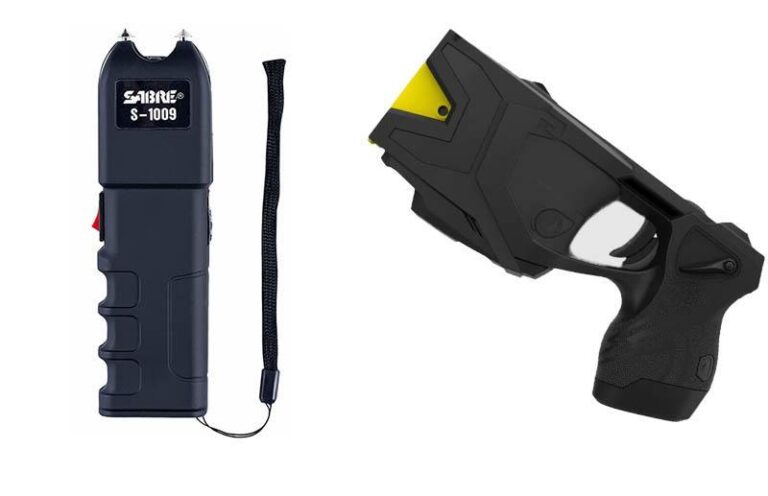Table of Contents
- Understanding the Common Causes of Stun Gun Trigger Misfires
- Essential Tools and Safety Precautions Before Attempting Repairs
- Step-by-Step Troubleshooting Techniques for Accurate Diagnosis
- Effective Maintenance Tips to Prevent Future Trigger Malfunctions
- Closing Remarks
Understanding the Common Causes of Stun Gun Trigger Misfires
Trigger misfires in stun guns often stem from a handful of overlooked issues that, when addressed, can dramatically improve reliability and performance. One primary culprit is battery degradation or poor connection. Over time, batteries lose their charge capacity, causing insufficient power to reach the trigger mechanism. Corrosion on battery contacts or loose connections can also interrupt the electrical flow, leading to unexpected failures when you need the device most. Ensuring your stun gun uses high-quality batteries and regularly cleaning contact points can help mitigate these problems.
Another significant factor is mechanical wear and debris accumulation within the trigger assembly. Dust, dirt, and moisture can infiltrate small crevices, creating friction or blocking the trigger’s movement. Additionally, consistent use or accidental drops may cause parts to loosen or misalign, resulting in a trigger that does not engage properly. A periodic, gentle cleaning routine combined with inspecting internal components for damage or wear will vastly reduce the chances of a misfire, keeping your stun gun ready for dependable operation.
- Check and replace batteries regularly to maintain optimal power levels.
- Keep battery contacts and trigger mechanisms clean to avoid electrical interruptions.
- Inspect for moisture and debris that may hinder mechanical function.
- Examine trigger components for signs of wear or damage after frequent use.
Essential Tools and Safety Precautions Before Attempting Repairs
Before diving into any repair work on your stun gun, having the right tools and practicing strict safety measures is crucial to ensure both effectiveness and personal protection. Essential tools you’ll need include a precision screwdriver set for opening the casing without damaging any delicate parts, a multimeter for diagnosing electrical issues, and insulated pliers to handle small components carefully. Additionally, having a clean workspace with adequate lighting and a static-free mat can prevent accidental damage to the stun gun’s internal circuitry.
Safety should always be your top priority when working with devices that carry electrical charges. Always begin by removing the stun gun’s battery before starting any repairs to avoid unexpected sparks or shocks. Wearing insulated gloves and safety glasses is highly recommended to protect against accidental electric discharges. Moreover, grounding yourself to discharge static electricity and avoiding metal accessories like rings or bracelets during repairs can prevent shorts and potential injuries. Taking these precautions can be the difference between a successful fix and an unsafe repair attempt.
Step-by-Step Troubleshooting Techniques for Accurate Diagnosis
Begin by isolating the source of the misfire. Ensure the stun gun is completely charged and that the battery connections are secure. Next, visually inspect the trigger mechanism for any signs of debris or physical damage that may obstruct its operation. Use a soft brush or compressed air to clean sensitive areas without causing further harm. Testing the trigger in a controlled environment allows you to observe if the issue replicates consistently, which is vital to understanding whether the problem lies within the trigger switch or an internal circuit.
After initial checks, move on to component-specific diagnostics. Use a multimeter to measure continuity across the trigger switch terminals, confirming whether the electrical contact is made when the trigger is pressed. If continuity is absent or inconsistent, consider replacing the trigger switch assembly. Additionally, check the wiring harness for frayed or loose connections, as these can cause intermittent misfires. Document each step and result to track progress and inform any necessary repairs or consultations with a professional technician.
Effective Maintenance Tips to Prevent Future Trigger Malfunctions
Maintaining your stun gun properly is essential to ensure reliable performance and avoid unexpected trigger malfunctions. First, always store the device in a cool, dry place away from moisture and extreme temperatures, as these conditions can degrade the internal components. Regularly inspect the trigger mechanism and surrounding parts for dust, dirt, or corrosion buildup. Using a soft brush or compressed air to clean the area will prevent debris from interfering with the trigger’s responsiveness. Additionally, check the battery condition frequently-weak or leaking batteries can cause inconsistent electrical flow, leading to misfires.
Incorporate a routine maintenance checklist that includes the following:
- Clean the trigger and housing: Remove surface grime with a non-abrasive cloth.
- Test functionality: Perform test activations in a safe environment to ensure consistent trigger response.
- Check batteries: Replace with manufacturer-recommended batteries before depletion.
- Secure loose components: Tighten any screws or fittings to avoid mechanical issues.
By combining diligent cleaning with systematic inspections, you significantly reduce the risk of trigger malfunctions and prolong the lifespan of your stun gun. Prioritizing these tasks fosters safety and dependability when you need your device most.
Closing Remarks
In conclusion, addressing stun gun trigger misfires promptly and effectively is essential for both safety and reliability. By regularly inspecting your device, maintaining its components, and understanding common troubleshooting steps, you can ensure your stun gun performs when you need it most. Remember, if issues persist beyond basic fixes, consulting a professional or the manufacturer is always the safest course of action. Stay informed, stay prepared, and keep your defensive tools in optimal condition for peace of mind.Check Our Other Blogs
- StunGun – Your Trusted Source for Stun Guns, Laws, and Self-Defense Tips
- PepperSprayLaws – Your Trusted Resource for Pepper Spray Information
- StunGunLaws – Your Trusted Guide to Stun Gun Legality and Safety





